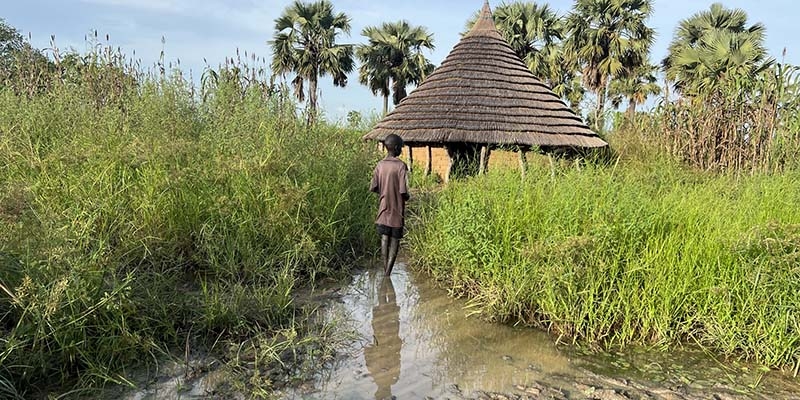Pakistan Floods Six Months On
The battle of last summer may be over, but the war from the devastating 2022 flooding is still on-going.

Globally, an estimated 1.2 billion children live in an area at high risk of flooding, severe drought, or other climate threats

A child born in 2020 will experience, on average, 2.8 times as many river floods compared to a person born in 1960

In Pakistan alone, the number of people going hungry soared by 45% since floods wreaked havoc across much of the country
With your help, Save the Children is working in the U.S. and around the world to help children and their communities adapt to the impacts of the climate crisis, including floods.
Torrential rainfall and flooding damaged camps and villages across earthquake-affected areas northern Syria. More than 4,000 families in northern Syria have been affected by the flooding, which has caused extensive damage, particularly in camps for internally displaced people (IDPs).
The flooding also cut off roads, restricting efforts to reach communities still in need of humanitarian assistance following the earthquakes that struck the region in February 2023.

Widespread flooding at the end of 2022, combined with inter-communal conflict and soaring food prices, has driven South Sudan into its worst hunger crisis since independence in 2011.
More than 615,000 people were impacted by an unprecedented fourth consecutive year of large-scale flooding destroying homes, crops, and leading to a spike in malaria and snakebites, particularly among women and children.
In July 2022, historic flooding in eastern Kentucky left a wake of destruction in its path.
Save the Children worked with school and community partners across six of the region’s hardest-hit counties to help schools and child care centers recover, and get children and families the essentials they need now and long-term, including social and emotional support to cope with stress and loss following the tragic flooding.
In August 2022, the worst flooding to hit Pakistan in decades severely impacted about 33 million people, including 11 million children - or 14% of the population.
One-third of the country was underwater following more than two months of storms and flooding, described by the government as a “climate catastrophe … of unimaginable proportions”. The floods and torrential rains were blamed on worsening weather patterns as a result of the climate crisis, with Pakistan ranked as one of the most vulnerable countries to climate change.
Save the Children supports children and communities most affected by the climate crisis to build resilience and adapt to the future, and provide emergency aid to communities affected by extreme weather patterns like floods. Your support makes this work possible.
We design programs to strengthen environmental action through school-based educational activities
We stand behind, and alongside, the student activists demanding action on the climate crisis
We help young people access green employment opportunities so they can contribute to future green economies
Floods are among the most frequent and costly natural disasters in the U.S. As much as 90% of all damage from natural disasters is caused by floods. Flooding typically occurs after heavy or prolonged rainfall, or the rapid melting of snow. While the effects of floods can be devastating, these flood safety tips can help keep children safe.
Save the Children is a Green Climate Fund accredited entity, aiming to help scale up locally-led approaches to adaptation. Your donation to the Children's Emergency Fund helps our work in the U.S. and around the world helping children and their communities prevent, prepare for and recover from flooding and other climate-induced disasters.
On September 10, 2023, extreme rainfall from a storm system called Storm Daniel struck parts of the central and eastern Mediterranean, leading to devastating flooding and massive loss of life in Libya, the worst affected country, as well as in Greece, Türkiye and Bulgaria.
Up to 10,000 people were reported missing by the Libyan Red Crescent Society. Experts say that Storm Daniel may have caused a meter of rain to fall on the hills of eastern Libya, an unprecedented amount since records began in the mid-19th century.
Thank you for signing up! Now, you’ll be among the first to know how Save the Children is responding to the most urgent needs of children, every day and in times of crisis—and how your support can make a difference. You may opt-out at any time by clicking "unsubscribe" at the bottom of any email.
By providing my mobile phone number, I agree to receive recurring text messages from Save the Children (48188) and phone calls with opportunities to donate and ways to engage in our mission to support children around the world. Text STOP to opt-out, HELP for info. Message & data rates may apply. View our Privacy Policy at savethechildren.org/privacy.